A colonoscopy allows the physician to look inside your entire large intestine, from the lowest part (the rectum), all the way up through the colon to the lower end of the small intestine (the cecum).
The colonoscopy procedure is used to look for early signs of cancer in the colon and rectum. It can also be used to diagnose the cause of unexplained changes in bowel habits. A colonoscopy enables the physician to see inflamed tissue, abnormal growths, ulcers and bleeding.
The procedure involves the insertion of a small flexible scope, about the size of your little finger. The scope has a light with a lens on the end that allows the physician to look directly into the colon. Due to the flexibility of the scope, it can be maneuvered and directed around the many bends in the colon.
The advantage of a colonoscopy, over other methods of viewing the colon, is that at the time of the examination a biopsy can be taken and polyps can be removed.
A biopsy is the removal of a small piece of tissue for examination under a microscope to determine the presence of a disease. A polyp is a growth on the surface of the colon. The patient does not feel the biopsy or the removal of the polyp.
Preparation
In order to obtain the full benefits of the exam, the colon must be clean and free of stool. The patient receives information during his or her office visit on dietary instructions and prep instructions regarding the procedure.
It is important to stress how critical your preparation is to your procedure. The most common problems are inadequate preparation and patients failing to follow instructions which can cause the colonoscopy to be rescheduled or repeated at a later date.
The Procedure
The colonoscopy is usually performed as an outpatient procedure at our facility, the Loudoun Endoscopy Group. Our providers also perform procedures at the hospital. The location, date, and time will be determined during your office visit.
After you register, a nurse will direct you to the pre-operative area. You will then be asked to change into a hospital gown and a small intravenous line will be inserted. Vital signs will be taken and an anesthesiologist will talk to you about the sedation.
You will then be taken back to the procedure room where you’ll meet the physician performing the procedure. An anesthesiologist or certified nurse anesthetist will then administer the sedation and monitor you during your procedure.
The examination will be done with the scope being passed through the rectum into colon, all the way to the cecum. This should cause no discomfort.
Throughout the procedure, your heart rate, airway and breathing are monitored continuously. The procedure takes 15 to 30 minutes and is seldom remembered by the patient.
Due to the air introduced into your colon to help the physician navigate, there may be some bloating discomfort after the procedure.
After the Procedure
You will be in the recovery area for approximately thirty (30) minutes where your vital signs will be monitored by a registered nurse.
Before you leave the doctor will speak with you, and your family, in regards to the findings of your procedure.
Once you are fully awake, you’ll be discharged and escorted out of our facility.
You will not be able to drive or operate heavy machinery for the rest of the day. It is imperative that you have someone drive you home.
You may resume a normal diet after the procedure. Although, you may want to avoid greasy foods as your first meal.
If biopsies were taken, expect to be notified of your results via mail, telephone (if urgent), or web message through our portal (if you have an active account) in about two to three weeks.
Side Effects and Complications
Post-Operative Instructions
Do not drive a car or operate machinery for at least twelve hours (12) after the examination. You should not do strenuous activity or exercise for at least 24 hours. You may eat and drink normally, unless you are instructed otherwise. Mild abdominal discomfort and bloating may be common the first day after the procedure. Rest and eating lightly may reduce these symptoms. A small amount of blood from the rectum may be seen.
For two days after your procedure watch for the following: Severe or persistent abdominal pain; Temperature elevation/fever; Bloody bowel movement(s) or rectal bleeding; and/or Vomiting. You will be given additional instructions after the procedure: follow the instructions given to you regarding aspirin or other blood thinning medications. If you have questions, concerns or problems, please call our office at 703-723-3670.

